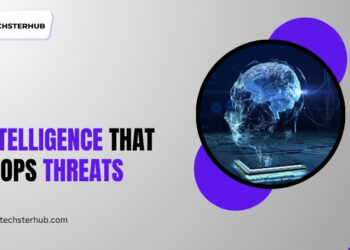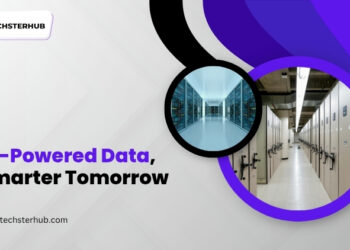In an era when data privacy is no longer optional, VaultGemma emerges as a seminal milestone in AI: the first large language model (LLM) trained from scratch under rigorous differential privacy constraints. Rather than applying privacy only after-the-fact, VaultGemma bakes privacy into its very foundation bringing us one step closer to AI that respects confidentiality by design.
This article will explore what VaultGemma is, how it works, the trade-offs it confronts, real-world use cases, its current limitations, and why it matters for AI’s future. Throughout, the keyword VaultGemma is used naturally, with SEO best practices in mind.
Why VaultGemma Matters
Modern LLMs are powerful, but at the same time they are also risky. Models that are trained on massive amounts of public and private data can unknowingly memorize sensitive sequences, such as private emails and pieces of code or personal data, and copy them out in response to prompts. This vulnerability has raised deep concerns in regulated industries such as healthcare, financial and government.
VaultGemma addresses this by using differential privacy (DP) in the training process. Differential privacy guarantees that no single training example can significantly affect the output of the model, and makes it statistically difficult (or even impossible) to be able to re-reconstruct individual inputs. The result: a model that learns the patterns and doesn’t learn what it shouldn’t.
By releasing the weights, technical report, and scaling laws behind VaultGemma, Google is inviting the research and development community to build privacy-first higher-capacity models.
What is VaultGemma — Key Characteristics
VaultGemma belongs to the Gemma model family, but with a critical twist: it’s the first in that family trained with full differential privacy.
Some core details:
- Size & Architecture: VaultGemma is a 1B-parameter, decoder-only transformer derived from Gemma 2 architecture, with 26 layers and multi-query attention.
- Privacy Budget: It is trained under DP-SGD (Differentially Private Stochastic Gradient Descent) with parameters ε ≤ 2.0 and δ ≤ 1.1e-10 (sequence-level guarantee over 1,024 tokens).
- Data & Filtering: It inherits the Gemma 2 data mixture: web documents, code, math texts, etc. Filtering (rigorous, remove sensitive or disallowed content (CSAM, PII).
- Open Release: VaultGemma weights, code, and evaluation scripts are openly published on Hugging Face and Kaggle under an open model license.
- Benchmarking: When evaluated on standard LLM tasks (e.g. HellaSwag, BoolQ, PIQA), VaultGemma performs respectably — though it does not yet match non-private models at the same scale.
How VaultGemma Is Trained: The Trade-offs & Scaling Laws
Training an LLM under differential privacy is not so easy. Adding noise which conceals individual training examples hurts the ability of the model to learn clear patterns. Google’s research team solved this by new private scaling laws and algorithmic innovations.
Noise-Batch Ratio and Regularity of the Planted Model
One of the key insights is that the dynamics of learning under DP are very much dependent on the noise to batch ratio – how much noise is added into the learning, relative to the number of examples included in each training batch. Increased noise continues to increase the size of the necessary batch (to mask individual signal) and/compute required to move train into stable places.
Google derived empirical scaling laws that relate compute, model size, privacy budget, and noise-batch ratio, guiding them to find the optimal training configuration for VaultGemma.
Also, they changed sampling protocols for allowing non-uniform batching to use so Poisson subsampling to meet DP constraints with little noise overhead.
The Utility Gap
Because of the injected noise, VaultGemma does underperform compared to equivalent non-private models. But its performance is close to non-private models years ago, which might come as a surprise but aligns with the fact that DP LLMs can be practical.
VaultGemma’s final training loss aligned well with predictions from their scaling laws, validating the theoretical model.
Use Cases & Applications
VaultGemma is not a toy it is purpose-built for environments where privacy is critical. Some promising use cases:
- Healthcare & Clinical AI: Training models on medical notes or patient data without risking leakage.
- Financial Services: Credit risk models, fraud detection, or private document analysis with mitigated exposure.
- Legal & Government: Confidential contracts, sensitive public records, or internal policy drafting.
- Enterprise Data Systems: Fine-tuning with proprietary data without leaking client-specific records.
- Academic Research: Serving as an open privacy-preserving baseline for experimentation.
Because of the open-weight privacy guarantees of the model, it is less risky than open LLMs trained in standard ways.
Limitations & Challenges for Open herma doom
VaultGemma is a landmark, but it is not without constraints or future work:
- Performance Ceiling: The utility gap remains. It lags behind non-private contemporaries, especially at larger model scales.
- Compute Cost: Training under DP is substantially more resource-intensive (larger batch sizes, noise stabilization).
- Sequence Length: It currently limits token sequence length to 1,024 to constrain compute and noise complexity.
- Domain Shift: Like all LLMs, performance can drop when applied to domains not seen in training.
- Bias & Fairness: DP does not inherently eliminate bias; model outputs could still mirror dataset biases.
- Inference Cost: Because of complexity and safeguards, inference may be slower or heavier than non-DP counterparts in production.
Google and the community will need to iterate on techniques like private fine-tuning, distillation, or hybrid privacy methods to bridge gaps.
Broader Impact & Why VaultGemma Changes the Game
VaultGemma signals a shift in how AI is built: not just for capability, but also for privacy by design. Some broader implications:
- It sets a benchmark: future models must compete not only on performance but also on privacy guarantees.
- Opens paths for regulated industries to adopt LLMs without excessive data risk.
- Encourages more public, auditable research into DP scaling for large models.
- Forces competitors to improve privacy standards or risk lagging ethically.
- Raises regulatory and ethical expectations: models that leak user data may face higher scrutiny.
VaultGemma effectively changes the narrative: AI that is powerful and private is not a trade-off it’s a target.
Summary & Future Directions
VaultGemma stands as the most advanced differentially private LLM to date. It shows that formal privacy guarantees can be trained from scratch in large-scale models with utility, compute and data budgets that are balanced through the new scaling laws.
Moving forward, some important directions of research are scaling to 1B+, private fine-tuning and distillation, efficiency of inference, and expansion of adoption in real-world domains, e.g. privacy-sensitive domains.
If you are developing AI systems for contexts where confidentiality matters VaultGemma may become one of your foundational tools.











